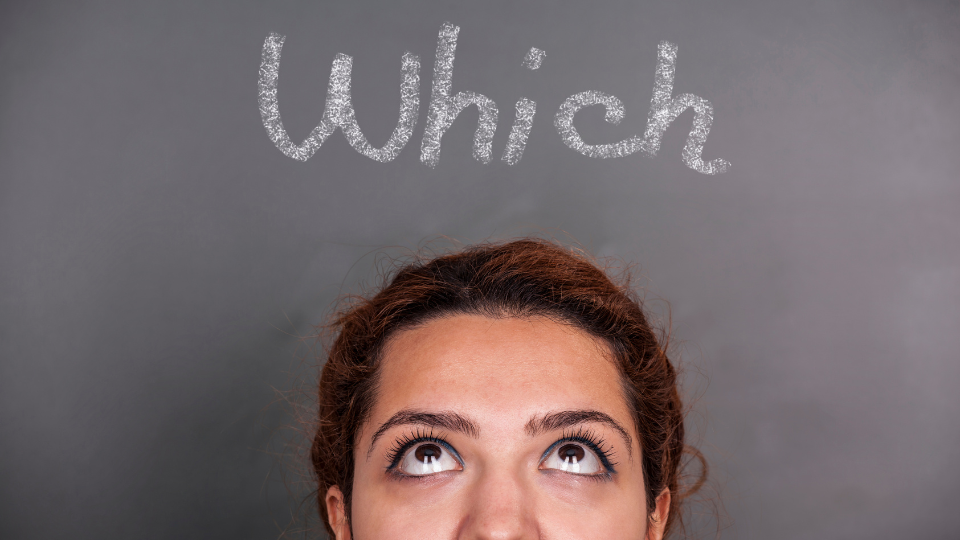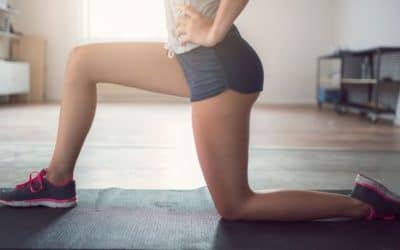If you’re dealing with chronic pain in your lower back or hips, it’s natural to feel uncertain about what is causing the discomfort. Is it a strain in your low back? Or maybe something else, like an injury in the hip joint itself? As a medical doctor who specializes in diagnosing and treating conditions that cause low back and hip pain, I’m here to help – starting with breaking down the differences between these two common sources of distress. Whether you’re still seeking answers or just want a better understanding of where your discomfort might be coming from, I hope this blog post will provide valuable insight into recognizing what type of condition may be causing your pain.
As a general rule, pain in the front of the hip that travels down the thigh to the knee is often indicative of a hip issue, while pain in the back of the hip that radiates down the hamstring to the calf is more likely related to a spine problem. This distinction can help individuals seek appropriate treatment for their pain.
After practicing chiropractic care for almost 30 years, I have gained a profound knowledge of how to improve posture and relieve the discomfort that often accompanies sitting. As a certified ergonomist, I have received specialized training in this field and have written several publications on the subject. My expertise has been recognized through various achievements, such as frequent television appearances, authorship of a book on posture, and a successful Kickstarter campaign for ergonomic seat cushions. Furthermore, I run a popular YouTube channel where I provide valuable insights and tips.
All Day Comfort & Support
Physical Therapy for Low Back and Hip Pain
Physical therapy is a great way to manage both lower back and hip pain. Depending on the nature of your condition, specific exercises may be recommended to help strengthen the muscles, improve flexibility, reduce inflammation, and promote better joint movement. To get the most out of physical therapy, it’s important to be consistent with your exercise regimen.
Joint Pain in the Low Back and Hip
Joint pain in the lower back or hip can be caused by various issues such as disc degeneration, sciatica, strains and sprains, arthritis, or bursitis. Different types of treatment are available depending on your individual condition. For example, heat therapy may be used to relax sore muscles while cold applications can help reduce inflammation. Massage therapy can also assist with reducing tension in tight areas of the body that cause pain.
Pillows for Low Back and Hip Pain
Pillows are an important tool in managing low back or hip pain. The right pillow can provide support to the spine by helping it maintain its natural alignment. A good pillow should also be firm enough to provide cushioning but not too thick as this can cause discomfort. There are several different types of pillows designed specifically for back and hip pain, including contoured memory foam pillows and orthopedic wedge pillows. It’s important to find the one that works best for you.
Black Friday: 35% Off Today
Typical Delivery 1-3 Days
Hip Rotation Weakness & Low Back Pain
Weakness in the hip rotators — those muscles responsible for moving your leg outward — can contribute to low back pain. This type of weakness is often seen when there is a misalignment in the hips or pelvis causing one side to participate more than another during daily activities. To improve this issue, focus on strengthening exercises that target those affected muscles while being mindful not to overcompensate with other areas of your body when performing movements like squats or lunges. Be sure to check with a medical professional before starting any new exercise routine if you are experiencing any form of lower back or hip pain.
Good Sleeping Habits for Low Back and Hip Pain
Sleep is an essential part of managing low back and hip pain. A good night’s sleep can help reduce inflammation, improve mobility, and strengthen weak muscles. To get the most out of your sleep, it’s important to invest in a quality mattress that provides enough cushioning on your lower back and hips while still providing adequate support. Additionally, using a lumbar supportive pillow or cushion to place behind your lower back when sleeping on your side can provide further relief from any discomfort.
Supportive Mattresses for Lower Back & Hip Pain Relief
If you are experiencing lower back or hip discomfort at night, investing in a supportive mattress may help provide some relief. Natural latex foam mattresses tend to be best for providing just enough support without being too firm – helping keep joints aligned during sleep while still offering pressure relief where needed most. Memory foam and gel foam mattresses may also offer some comfort but they don’t offer quite as much support as natural latex foam does. Experimenting with different mattresses until you find one that works best for your body type is key to finding an optimal sleeping position and achieving restful nights!
All Day Comfort & Support
Best Pillows for Back Pain Relief | Lower Back Pain
Pillows can also provide additional support for your back and spine while sleeping. Back sleepers may benefit from a fairly thick pillow to keep their head, neck, and spine in alignment. Side sleepers may need a pillow between their knees to reduce stress on their hips and lumbar spine. There are many different types of pillows available, including support pillows, lumbar support pillows, and medically reviewed pillows designed to relieve back pain. Purple back cushions and other types of cushions can also help support your back while sitting or sleeping. Experiment with different types of pillows and cushions to find the one that provides the most support and comfort for your specific needs.
Can hip pain be mistaken for lower back pain?
Absolutely. Low back pain and hip pain can be difficult to differentiate, and in many cases, the source of one may be affecting the other.
A pillow is an important part of getting good sleep when you’re dealing with low back or hip pain. A pillow should provide both comfort and support while sleeping, as it helps maintain proper posture throughout the night. The right pillow will help keep your spine aligned, reduce pressure on your joints, and minimize tension in muscles that might otherwise cause discomfort.
The best pillows for relieving lower back or hip pain are those that provide ample support for your neck, head, shoulders and hips. When shopping for a pillow, look for something fairly thick but still comfortable – not too firm or too soft. It should also provide good lumbar support to keep your spine in a neutral position.
When sleeping on your back, look for a pillow that is slightly thinner and shaped to fill the gap between your neck and the mattress. You may find it helpful to try different models before settling on one that works best for you. When lying on your side, use a thicker pillow or extra cushioning under your head to maintain proper alignment of your neck and spine.
The best way to ensure you’re getting the most out of your pillow is to test it before using it regularly. Make sure it offers adequate support and enough comfort for comfortable sleeping all night long.
Black Friday: 35% Off Today
Typical Delivery 1-3 Days
Why does my lower back and hip hurt on one side?
A variety of factors can cause pain in the lower back and hips. These include incorrect posture, poor ergonomics, muscle strain or weakness, joint stiffness, degenerative conditions such as arthritis, as well as age-related changes in the spine. In some cases, hip pain can also be caused by referred pain from other body parts.
In order to help relieve your particular situation it is important to have a full assessment from a qualified health professional such as a chiropractor or physiotherapist. They will be able to determine what is causing your specific symptoms and guide you through the appropriate treatment plan.
How do you know if it’s your hip or sciatica?
Sciatica pain radiates from the lower back down one or both legs. It can be caused by a herniated disc pressing on nerves in the spine, or an injury to the sciatic nerve itself, and it is usually felt as a sharp, shooting pain. Hip pain, on the other hand, is usually felt as stiffness or soreness in the hip joint, groin region and surrounding muscles.
If you are unsure whether your symptoms are due to hip pain or sciatica, it is important to seek medical advice from a healthcare professional such as a chiropractor who will be able to assess and diagnose what may be causing your discomfort.
Signs to Watch for in Back Pain
While many cases of back pain can be treated with self-care, others may require medical attention. There are certain warning signs that indicate the need for prompt medical intervention:
- If you experience a fever along with back pain.
- If you feel numbness in your groin area.
- If you suddenly experience weakness in your legs.
- If you are having difficulty controlling your bladder or bowel movements.
- If you are unable to sit or stand comfortably.
- If your pain is getting worse instead of improving over time.
Back Pain Potential Causes
My experience as a chiropractor has taught me that back pain can be classified as acute or chronic. Acute back pain usually lasts a few days to several weeks before subsiding, while chronic back pain persists for more than 12 weeks.
The lower back is one of the most common types of back pain, which can be caused by many factors, including:
- congenital skeletal abnormalities such as scoliosis, lordosis, and kyphosis
- degenerative conditions like arthritis, spondylosis, and disc degeneration.
- Other potential causes of low back pain include spinal problems like sciatica, ruptured discs, spinal stenosis, spondylolisthesis, and osteoporosis.
- Additionally, conditions like piriformis syndrome, fibromyalgia, endometriosis, pregnancy, and tumors can also contribute to back pain.
Back pain can also be caused by lifestyle factors. A prolonged sitting period, especially with inadequate back support, is more likely to cause back pain, as are overweight and elderly individuals. Sedentary lifestyles and poor posture can also increase back pain risk. It is also possible to experience back pain as a result of stress, anxiety, or depression.
I advise patients to maintain regular movement and exercise to reduce back pain, as well as use proper seat cushions, In addition to getting enough quality sleep, a healthy back also depends on getting enough quality sleep, Maintaining a good sitting posture during the day and a proper sleeping position at night can help individuals minimize their risk of developing back pain and maintain a healthy back.
Conclusion
Determining whether it’s low back or hip discomfort that’s causing your pain isn’t always easy – but it helps if you understand the differences between both conditions while seeking appropriate treatment such as physical therapy combined with supportive mattress choices like natural latex foam! A good pillow or cushion can also make a big difference in supporting your back and spine, especially for those who experience back pain while sleeping.





